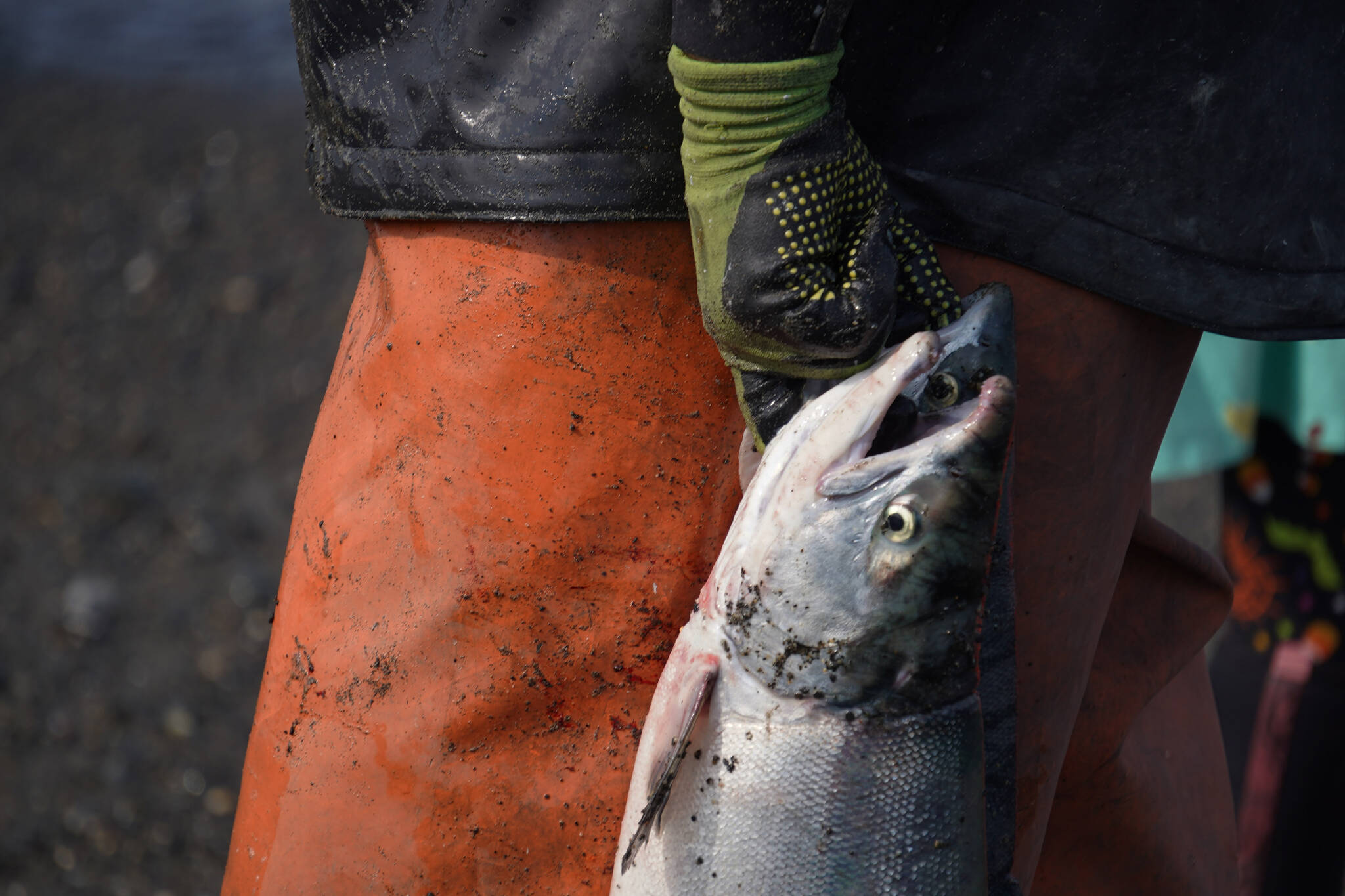The Commercial Fisheries Entry Commission has begun a process to add dipnets as a legal gear type for commercial set gillnet fishing operations in Upper Cook Inlet’s Central Region, which includes the east side setnet fishery.
The move follows the March approval by the State Board of Fisheries that added dipnets as a legal gear type for the fisheries and established regulations for their use. Before the gear can be used and the fishery opened, both the board and commission needed to approve dipnets in their regulations. The board approved the change in pursuit of options for “selective harvest with no termination of kings,” in the words of member Mike Wood.
According to an advisory announcement by the State Department of Fish and Game on May 16, the commission on the previous Monday issued notice of their proposed regulatory changes to begin a 30-day comment period.
Public comments on the changes, including regarding potential costs to users, the announcement said, can be mailed to the commission or submitted at 907-789-6170, dfg.cfec.publicquestions@alaska.gov, or the Alaska Online Public Notice System. Comments will be accepted until 5 p.m. on June 13.
Once the comment period ends, per the announcement, the commission will either adopt the regulation or decide to take no action. A notice from the commission says that a public meeting will be held in Juneau on June 25 to consider action on the regulations. The department announcement says that final regulations “would then likely” be published in July.
The department’s regulations, approved by the board, allow for the use of dipnets in the commercial set gillnet fisheries when set gillnet fishing is closed and “based on abundance” of sockeye salmon. Up to three 12-hour periods of commercial dipnetting “may” be allowed each week from June 20 to July 31.
Retention of king and coho salmon is prohibited and they must be immediately released “unless the fish is mortally wounded or dead.” Those fish must be brought onboard and reported under new regulations also implemented by the board in March within the Kenai River Late-run King Salmon Stock of Concern Action Plan.
Each permit holder may operate up to four dipnets at a time, with each being operated either by the permit holder or licensed crew. Dipnets may not be more than 5 feet in diameter, the depth of the bag must be at least one-half of the diameter, and no portion of the bag may be constructed of webbing that exceeds a stretched measurement of 4 and a half inches. Each net must be attached to a single, rigid handle and be operated by hand.
The department is unable to open the fishery for the use of dipnets until after the commission’s regulations are finalized. With the process not expected to be completed until July, the fishery will remain closed for the first weeks.
At the board’s meeting, multiple commercial setnet fishers from the ESSN spoke against the option, though some indicated that they would take advantage of the opportunity if it were offered, under the understanding that they otherwise would likely see no opportunity under the king salmon action plan.
For more information about the Board of Fisheries, including proposals, reports and audio from the Upper Cook Inlet Finfish meeting, visit adfg.alaska.gov. For more information about the Commercial Fisheries Entry Commission, including the newly proposed regulation, visit cfec.state.ak.us.
Reach reporter Jake Dye at jacob.dye@peninsulaclarion.com.


